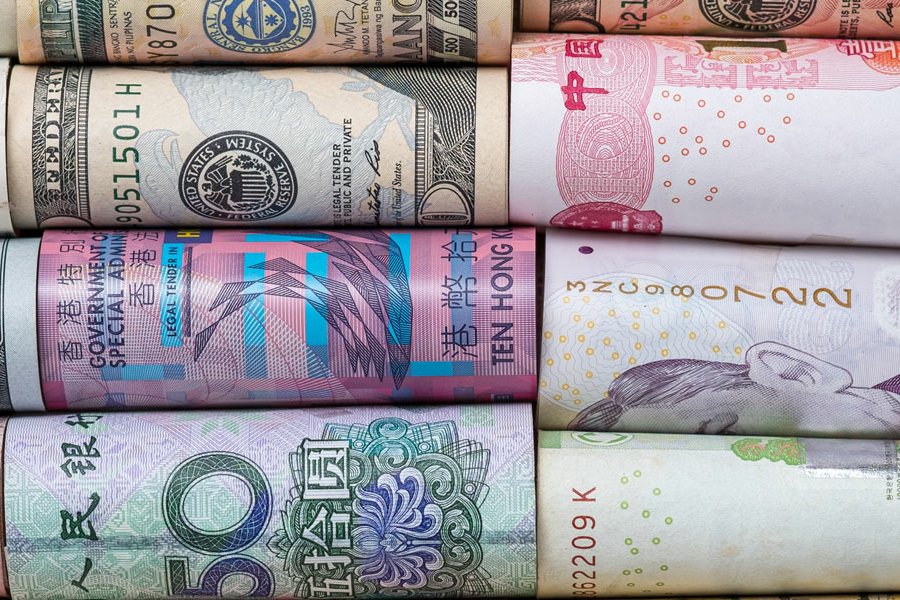Foreign direct investment reviews increasingly impact cross-border deals
Continued emphasis on FDI around the world, particularly in the US and Europe, creates additional challenges for investors

The past two years have witnessed significant geopolitical fracturing and macroeconomic difficulties that continue to hamper certain dealmaking. Several sectors have posted transactional lows throughout 2023, and persistent inflation and high interest rates look set to remain in place for now. Economic decoupling and growing global regulations also create transactional hurdles, while China's slowing economy and now the Israel-Hamas war add to a steady sense of market unpredictability.
And yet, with volatility comes opportunity, such as infrastructure and renewables projects, growth in the semiconductor industry, and the rise of private credit. As many companies and investors in Taiwan are discovering, economic or regulatory setbacks are an invitation to think innovatively and to recalibrate their approach. With the right information and careful planning, they can position themselves for success now and in the future.
Following our 18th Annual Taiwan Roundtable Series in September, we hope this year's report for Taiwan-focused companies and investors provides helpful guidance in a rapidly evolving political and economic landscape.
We begin with a look at the continued proliferation of foreign direct investment (FDI) regimes in the US and the European Union. The Committee on Foreign Investment in the United States (CFIUS) has ramped up its activity to an all-time high, while EU member states continue to implement, refine and expand their regimes. Many FDI focus areas overlap with those of Taiwanese companies—technology in particular—meaning early-stage analysis is critical in this arena.
We then analyze the impact of forum selection in contracts with mainland Chinese (PRC) companies. Despite the tensions between PRC and Taiwan, their economies remain inextricably intertwined, so Taiwanese companies should consider how the provision of "interim measures" in Hong Kong arbitration can benefit their business.
Next, we provide an overview of the EU's new Foreign Subsidies Regulation (FSR), which scrutinizes foreign financial contributions received by companies engaging in M&A and public tenders in the EU, and grants the European Commission the power to investigate any other potentially distortive market situation. Taiwanese companies should be aware that the FSR casts a wide net and could also encumber merger control and FDI filings.
We then turn to the growing popularity of the US International Trade Commission (ITC) for trade secrets litigation. The ITC's unique global reach means trade secret owners can make a claim of misappropriation on any product that enters the US, even if the trade secret and alleged misappropriation are entirely extraterritorial. The risk of these claims has broad implications, especially for foreign companies trying to diversify and broaden their global footprint.
Our transaction-focused piece looks at the evolution of M&A, debt finance and investment funds practices in a tough macroeconomic environment. Certain technology and renewables remain attractive for M&A and private equity, while local consumer brands are considered the next target of credit investors, and the funds space is seeing growth in the secondaries market and NAV financings.
Aligning with the Roundtable Series' "clubs and fences" theme, we consider trade and sanctions through this framework. Taiwanese companies have the difficult task of balancing often-competing interests in Asia-Pacific and the West, but they will benefit from taking advantage of regional trade clubs and nimbly navigating regulatory fences that include tariffs, sanctions and export control.
Lastly, we examine two major proposed changes to US antitrust policy by the US Federal Trade Commission (FTC) and the Department of Justice, Antitrust Division: the FTC's proposed ban on non-compete clauses and both agencies' radical proposed changes to the Hart-Scott-Rodino Form. One key takeaway examines the possible use of employee NDAs to protect company information.
We look forward to discussing these and other issues with you.
Continued emphasis on FDI around the world, particularly in the US and Europe, creates additional challenges for investors

Provision of "interim measures" strengthens Hong Kong's position as a level playing field in arbitration against PRC counterparties

The bloc's new scrutiny of foreign financial contributions poses regulatory hurdles for Taiwanese investments in M&A and public tenders in the EU

The growing popularity of the ITC as a regulatory venue with global reach has implications for Taiwanese trade secret owners and investigation targets

M&A, debt finance and investment fund actors seek alternative routes to dealmaking in the face of a dim macroeconomic outlook

The evolving trade and sanctions landscape reflects a new global regulatory paradigm

US antitrust agencies step up enforcement with proposed policy changes that create uncertainty and new regulatory burdens


The growing popularity of the ITC as a regulatory venue with global reach has implications for Taiwanese trade secret owners and investigation targets
A regulatory fence surrounds the United States, blocking the importation of any product that uses or was made using a misappropriated trade secret, among other unfair acts. That fence, called the Tariff Act of 1930, or Section 337, enables the US International Trade Commission (ITC) to investigate any claim of trade secret misappropriation with a nexus to an imported product, even if the trade secret and the alleged misappropriation are entirely extraterritorial.
Trade secret owners have caught on to this power. From 2017 to 2021, the number of active trade secret misappropriation investigations conducted under Section 337 went from one to nine—an 800 percent increase. Prior to that, between 2013 and 2017, cases fairly steadily averaged two per year.
Section 337 has also had a tremendous effect on international trade. In the past ten years, the ITC has handed down exclusion orders exceeding 104 years in aggregate. In 2021, Seoul-headquartered SK Innovation agreed to pay LG Energy Solution US$1.8 billion in cash and royalties to settle LG's trade secret misappropriation claims after the ITC found SK Innovation had violated Section 337.
Trade secret owners are drawn to the ITC for several reasons that mark the venue as one-of-a-kind:
It's not all upside in the ITC for complainants, however. Section 337 requires a complainant to satisfy a unique and often complicated element of proof: that the respondent's misappropriation has the threat or effect of destroying, substantially injuring, or preventing the establishment of an industry in the US. This "injury requirement" is intended to protect a club of US companies, universities and inventors from unfair foreign competition. In reality, however, companies from Korea, Singapore, Hong Kong, China and Ireland have all filed trade secret misappropriation claims under Section 337.
To satisfy the injury requirement, a complainant must define a domestic industry and show that the misappropriation has caused, or will cause, substantial injury to it. The ITC will closely scrutinize the injury claim and, if the complainant fails to satisfy this element of proof, will find no violation in the investigation. Most recently, the ITC ordered the administrative law judge in a trade secrets case to assess and rule on an injury claim within 100 days of the beginning of the investigation; if the judge had found no injury, then the case would have ended before the complainant even had an opportunity to argue the merits of its misappropriation claim.
A trade secret owner may find the ITC to be an attractive forum to seek redress for trade secret misappropriation if it is trying to address conduct that occurred entirely outside the US, or if speed and an injunction are of paramount importance. Before filing, the trade secret owner should assess the likely exclusionary period and determine whether that period provides sufficient relief, particularly in comparison to the exclusionary period that could be afforded by a finding of patent infringement.
The target of a Section 337 trade secret misappropriation investigation should know that it cannot hide from ITC jurisdiction as long as a relevant product has been imported into the US. A target should retain experienced counsel immediately to begin chipping away at the complainant's head start, to develop defenses to the misappropriation allegations, and to scrutinize the complainant's injury claim.
White & Case means the international legal practice comprising White & Case LLP, a New York State registered limited liability partnership, White & Case LLP, a limited liability partnership incorporated under English law and all other affiliated partnerships, companies and entities.
This article is prepared for the general information of interested persons. It is not, and does not attempt to be, comprehensive in nature. Due to the general nature of its content, it should not be regarded as legal advice.
© 2023 White & Case LLP